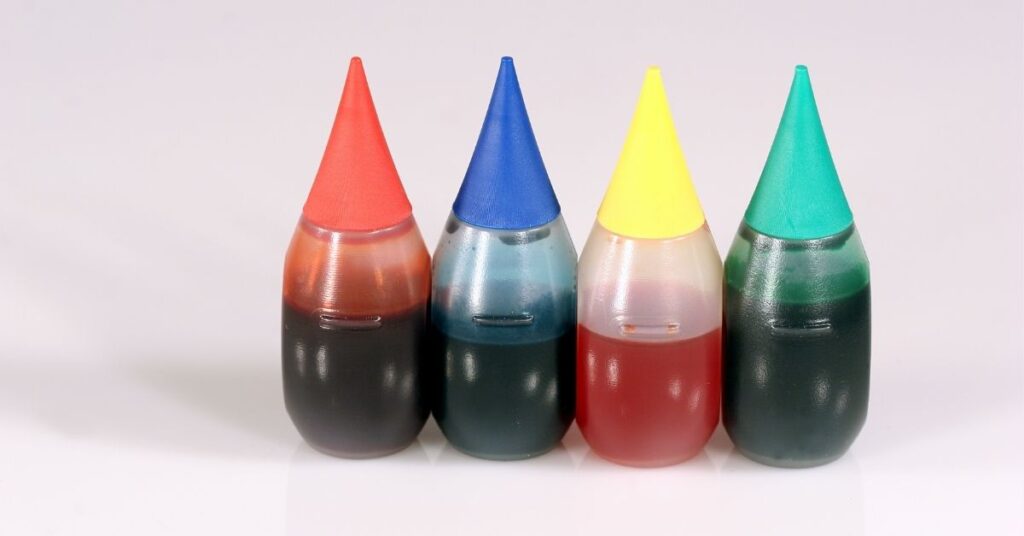Yes, food coloring does stain.
Does Food Coloring Stain?
Okay, let’s get right to it – yep, food coloring does stain. Those bright, cheerful colors that make your favorite treats so festive can leave some not-so-cheerful marks on your skin, clothes, countertops… you name it! But hey, don’t let that discourage you – there are ways to deal with and even prevent those pesky stains.
Why Does Food Coloring Stain?
Food coloring is made up of super-concentrated dyes. These dyes are designed to bind to whatever you’re coloring, whether it’s frosting or fabric. This binding ability is what makes them so effective but also what makes them likely to leave a mark.
What Does Food Coloring Stain?
Unfortunately, food coloring can stain a whole bunch of things, including:
- Skin: We’ve all been there – a baking project goes wild, and you end up with rainbow-colored hands.
- Fabrics: Clothes, tablecloths, napkins – if it’s fabric, it’s at risk.
- Counters and Surfaces: Especially porous ones like granite or even wood if not sealed.
- Carpet: Imagine a spilled bottle of red food coloring… yikes!
Factors That Affect Staining
Some things can make food coloring stains worse:
- Type of dye: Some food colorings are more potent than others. Those bright neon colors? Extra potent!
- Material: Porous materials (like those mentioned above) are harder to clean.
- Time: Letting it sit will make the stain set. Act fast!
How to Remove Food Coloring Stains
Don’t panic! While food coloring stains can be stubborn, they’re usually not impossible to remove. Here’s a breakdown of what works for what:
Removing Food Coloring Stains from Skin
- Wash it Off ASAP: Soap and water are your best friends.
- Rubbing Alcohol: This can help if soap and water don’t fully work.
- Time: Don’t worry too much – even if it doesn’t come off instantly, your skin will naturally shed the stained cells.
Removing Food Coloring Stains from Fabrics
| Material | Removal Methods |
| Cotton | Pre-soak in detergent. Wash in hot water if safe for fabric. |
| Polyester | Rub with dish soap, pre-treat, wash. |
| Wool, Silk | Sponge with cool water, pretreat, consider professional cleaner |
Removing Food Coloring Stains from Hard Surfaces
| Surface | Removal Methods |
| Countertops | Dish soap and warm water. Baking soda paste for stubborn stains. |
| Plastic Containers | Soak in a diluted bleach solution. |
Tips to Prevent Food Coloring Stains
Prevention is always better than cure, right? Here’s how to avoid food coloring mishaps:
- Wear protective gear: Gloves and an apron are your friends!
- Work on protected surfaces: Cover your counters and tables.
- Add color carefully: Go drop by drop to avoid spills.
- Clean up spills immediately Don’t let them dry and set.
Removing Food Coloring Stains from Other Surfaces
While we covered some common culprits, here’s what to do when food coloring stains other things:
- Carpet: Ouch! Blot up excess dye immediately. Sponge with a mixture of dish soap, white vinegar, and warm water.
- Upholstery: Sponge with dish soap and warm water. Consider a specific upholstery cleaner for tougher stains.
- Hair: Try washing with clarifying shampoo. If that doesn’t work, a mild dish soap diluted in water might help. Consult a stylist for persistent stains.
Does the Type of Food Coloring Matter?
You bet! Here’s what you need to know:
- Liquid Food Coloring: Your standard, most common type. Spills easily, stains quite readily.
- Gel Food Coloring: Thicker and less prone to spills, but those concentrated pigments still pack a punch.
- Natural Food Coloring: Derived from plant-based sources, generally less potent than artificial colors, but can still stain.
How Material Affects Staining
It’s not just about the dye; the material matters too:
- Porous vs. Non-porous: Porous things like fabric, unsealed stone, or wood absorb stains more easily, making them tougher to remove.
- Color: Light-colored surfaces show stains more obviously.
- Fiber Type: Natural fibers like cotton and wool are more susceptible to staining than synthetics like polyester.
More Stain Prevention Tips
Since we’re on the topic of prevention, let’s throw in a few more tips:
- Work over the sink – If there’s a spill, it’s contained.
- Start light, add more – You can always add more food coloring, but you can’t take it away.
- Dilute concentrated colors – A little goes a long way, especially with gel dyes.
- Have cleaning supplies handy – Be ready for those inevitable accidents!
Does Food Coloring Stain Permanently?
In most cases, no. With persistence and the right methods, you can usually get rid of food coloring stains. However, some factors can make a stain more likely to be permanent:
- Very porous materials.
- Leaving the stain to set for a long time.
- Using super-concentrated dye on a light-colored surface.
Conclusion- Does Food Coloring Stain?
So, does food coloring stain? Yes, unfortunately, it does. But thankfully, with fast action, the right cleaners, and some helpful tips, you can minimize the damage and enjoy using those vibrant colors without too much stress.
